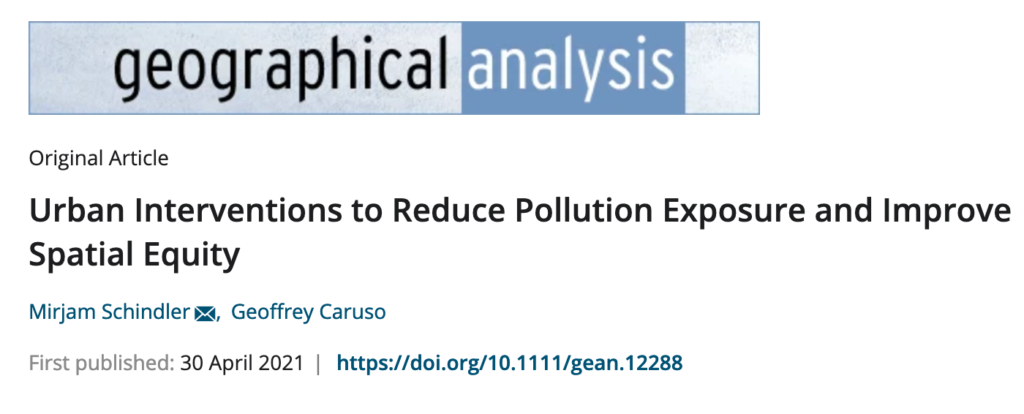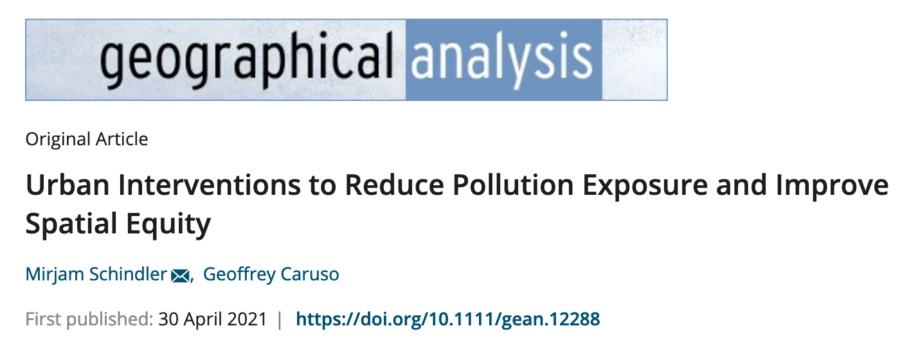New publication by Mirjam Schindler and Geoffrey Caruso
Abstract
Air pollution is of increasing concern to urban residents and urban planners are struggling to find interventions which tackle the trade‐off between environmental, health, and economic impacts arising from this. We analyze within a spatially explicit theoretical residential choice model how different urban interventions can reduce exposure to endogenous traffic‐induced air pollution at residential locations. We model a city of fixed population size, where households are averse to localized pollution and examine how a flat commuting tax, an urban growth boundary, a cordon toll, and the optimal distance‐based tax compare to an urban scenario without any planner’s intervention. We find that an urban intervention to optimally address exposure concerns needs to achieve steep density gradients near the urban fringe and flat gradients near the center. We show the deficiencies of the alternative interventions to achieve optimal population distributions within the city and in a scenario where peoples’ aversion to pollution increases. We then discuss these interventions in light of resulting spatial patterns of exposure and spatial equity that is households’ assessment of their own exposure to air pollution relative to their responsibility for the exposure of others depending on their spatial location within the city. Our results show that, when equity is also a concern, compensations are needed from households who live in the periphery and our simulations suggest that a cordon toll can then achieve a more balanced outcome.
https://doi.org/10.1111/gean.12288


